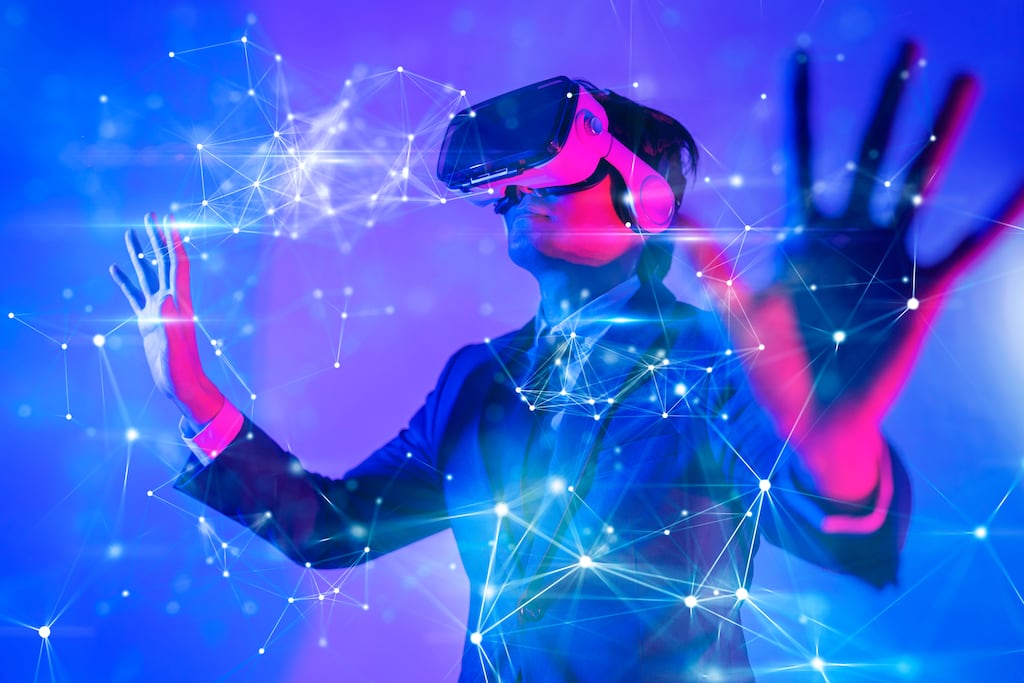“I will try my best to cut through the hype,” says Tobias Alexander Franke, principal game engine architect at Huawei Ireland Research Centre, who says the metaverse is simply a shared 3D space that makes up one big world for anyone to visit.
It sounds super-futuristic, but that idea is itself already well established.
“The internet is such a place but in 2D, where users can create websites and visit websites of others, a collaborative effort between millions of users. The key question behind the metaverse is: Can we do that in 3D, with the exciting possibilities that a 3D world would offer?”
The answer is yes but, “the metaverse is a hard problem to crack,” says Franke. “How can people create their own world and share it with others in an intuitive and easy manner? It has been tried multiple times, with early examples in the late 90s based on the Netscape browser and VRML, an early 3D technology for the web. Shared 3D spaces already exist today, but as isolated islands, and mostly as games.” Minecraft or ROBLOX are famous examples.
“What makes the metaverse – as a technology – so difficult to handle is that unlike the 2D web, 3D worlds have no common standard on how to build them. While one can use any browser on a multitude of devices to load and display a website, there is no common ‘3D browser’ that works well on the same range of devices,” he explains.
“Creating 3D worlds is also difficult, requiring a lot specialised skills in order to make them run in an efficient manner and look the way you want. There are a lot of technical hurdles to solve before we can get there. Last but not least, in order to create a true 3D experience, viewing the metaverse on a flat screen would be counter-productive, so access to the metaverse makes more sense through VR devices.”
Some industries have already embraced VR, such as tourism, where visitor attractions like museums have created immersive experiences for exhibitions and artefacts.
“In the metaverse, it may be possible to visit digital twins – virtual replicas – of tourist attractions or even entire cities, transporting yourself anywhere without needing to ever get on a plane. Although nothing beats having the experience in person, if we were to consider how we could not travel during the past two years, the metaverse could have provided a welcome escape,” he points out.
What will drive the widespread adoption of the metaverse is the ability to connect at high speeds and with low latency, through new mobile networks leveraging 5G, 6G, and beyond.
“Coupled with new 3D architectures that can offload the high rendering cost from small-scale VR devices to edge-computing networks and the cloud, this will enable the true ‘on-the-go’ experience the metaverse needs to be complete,” Franke says.
You only have to consider life before the internet to see how revolutionary life with the metaverse will be.
“Think about how life has changed since the inception of the internet. We play, shop and even work online, most of our applications run remotely, we gain access to data that one could never store on a phone, like a worldwide map, searching information has never been easier and video-communication is completely mundane at this point,” says Franke.
“But just as every artist has to work with the canvas they have and not the canvas they want, so too have all of these technologies been built in 2D world.
“It has yet to be seen what we will come up with in the metaverse, but several examples already show where we are going. Rather than ordering several pieces of clothing and seeing what fits, you can try them on (virtually) ‘in person’.
“Getting a digital twin of your apartment preview-furnished with a new kitchen is easier than ever. Checking out a place you’d want to visit on a map is no longer tied to the perspectives of photos other people took. Communication and collaborative work becomes much more tangible.”
Cryptocurrencies are closely linked to the metaverse. “These are regarded as independent digital payment methods that, just as the internet itself, have no central point of control and are not tied to any nation-state,” Franke explains.
“Currently, a lot of games feature in-game currencies, small tokens that can be used to pay for something inside a game world. Some of these in-game currencies have exchange rates to real world currencies, making them an alternative means of payment.
“Similar to the standardisation problem of how to build shared 3D worlds, payment methods for a global economy inside the metaverse need to be standardised.
“Given though that the internet functioned without cryptocurrencies, it does not seem that they play such a central role for the metaverse. However, similar to the issues of copyright on the internet today protecting private property, the metaverse needs a unified method to declare ownership of unique, digital 3D assets.
“This is something that is being investigated with non-fungible tokens, which are essentially cryptocurrencies that only represent an indivisible single thing owned by a someone.”












